|
"We shape our buildings; thereafter they shape us." - Attributed to Winston Churchill The fifth module in the Flipped Certification Level II is focused on learning spaces. Several years ago a trend emerged from a number of the larger multinationals such as Google to move away from offices and cubicles to open-plan office space and hot desking under the concept of open office. This trend took hold and many companies were reported as switchign across; however, lately there has been a trend to move back towards more traditional office structures or to find a middle ground. This trend also hit education, with many schools investing significant funds in redesigning their buildings to create open learning spaces. Whether this works depends on who you talk to. My experience in a two-class space was that it was brilliant. My teaching partner and I loved it and learned from each other as we developed our pedagogy to suit this new space, resulting in one of us being able to do the explicit teaching as required with the other available to work one on one or with small groups. I have heard stories of it being terrible. Of the space being open but there being invisible walls with an unwillingness to engage in collaborative teaching from one or more of the teachers in the space. So I was curious to hear the Learning Space expert, David Jakes, had to say about structuring learning spaces specifically for flipped classrooms. One thing which David said that really stood out, when asked by Jon what a teacher should buy to get the most out ofa space, was that if you have a budget, do not go out and buy things to put in your room. Consider what you want the space to be for each lesson/subject, what the teaching and learning experiences are that will need to occur and then find things and furniture that will facilitate that. It may sound like an obvious response, however, so many schools that I have visited have simpy replaced old traditional furniture for new funky furniture and then then six months down the track discovered that they are not using a significant portion of it, or that they are constantly having to shuffle things out of the way. This was only a short section of the certification course, so I will stop there and not give away the entirety of the contents, but it was an easy to digest component as there was nothing particularly revelatory. A lot of it was good to hear reframed. That said, having been in a school that has gone through a rebuild in the last few years, I also went looking for ideas, thoughts, and advice on different learning spaces, furniture etc. during the process so that I was ready. Thank you, as always, for reading. Given the time in the year and how busy things are, I may or may not publish further articles this year (though I do intend for a general reflection article). Please enjoy the remainder of your school term, however long that may be, and stay safe over the coming summer break.
0 Comments
FutureSchools 2017 - Prakash Nair: Learning Environments: Optimising Places and Spaces for Learning24/3/2017
"We spent $10bn on [physical] school improvements yet no measures of educational outcomes improved."
-Prakash Nair
Disclosure: My attendance at FutureSchools 2017 is under a media pass provided by the conference organisers.
If you have missed the previous articles in the FutureSchools 2017 series, you can view them here. I do not intend to write a hugely detailed review of Prakash's keynote as there was significant overlap between this presentation and the masterclass, which I have already reviewed here. There were, however, some differences. One of the differences was the inclusion of his statement which I have included at the top of this article. It was part of his opening phase, giving some of his own background, including his early career where he felt that he was doing some great work with the company he was employed with and the realisation that there had been no measurable improvement in learning outcomes for students as a result of the work done by his company. It was, for him, a watershed moment and he took the bold step of starting his own company on the back of that realisation in order to be able to work to positively impact student's learning outcomes. It was asked by one audience member, Martin Levins, that perhaps the reason no improvement in student learning was observed was that the wrong things were being measured. This does go back to the general theme that had come through from Milton Chen's keynote and Jan Owen's keynote, that education needs to change the focus from high-stakes testing.
Prakash commented that there are two trillion dollars worth of obsolete school buildings in the United States, if one goes with the definition of obsolete as those which are based on cells and bells. There are two categories of people in society who are typically given no choice in their movement; students and prisoners. He continued this theme by stating that there is less square feet of space given to students than to prisoners in current school building designs, with around thirty percent of space in schools lost to useless corridors. It does not take much work to change that, however, nor an overly large investment in money to do so.
Prakash exhorted us to stop assuming that students need to be taught in order to learn and to go forth bravely and be the change we want to be in our schools. I am going to hold the article there as I do not feel I can write much more that I have not already said in my review of Prakash' masterclass. That said, feel free to read through the Storify of the Plenary session to get an insight into the general flavour of what was being said.
"Having a student-centered space is not the same as having student-centered learning, nor does it equal a change in pedagogy."
-Prakash Nair (paraphrased). 22 March 2017.
Disclosure: My attendance at FutureSchools is under a media pass provided by the conference organisers.
If you have missed any articles in this series, please click here to find the full list. FutureSchools 2017 began, for me, with a nice walk in miserable weather from my hotel to the Melbourne Convention and Exhibition Centre (MCEC) for the Masterclass Day. I planned to sit in on Prakash Nair's masterclass examining "Practical Strategies to Maximize Teacher Effectiveness in New Student-Centered Learning Spaces" which, for me, was something of personal and professional interest when the arrangement for me to attend FutureSchools was initially made. As my regular readers would be aware, my school has been undergoing a capital building project, and I was intriguied as to what I would be able to take back to my school about using learning spaces and designing them for students benefit and to change pedagogical practices. However, as I sit here now, my context has changed significantly and school design is not on my radar personally or professionally. I therefore struggled, significantly, to engage with what Prakash was saying and asking us to do as I struggled to see where I could connect with it.
Prakash opened by commenting that in his experience, Australia is often one of the key innovators in learning spaces, which I found a genuine surprise. Moving forward, he indicated that his view is there are three types of learning (as seen in the above tweet) and that these take place in a range of contexts, at a variety of times and that they can occur side by side with each other in the same learning space. He then showed us some examples of what these look through a series of photographs of learning spaces around the world.
Changing tack, he then noted that they believe in sharing and that everything they do, they share, that they hold no intellectual capital. I find this an interesting stance to take from a corporation, however, some of his comments over the course of the morning indicated that the contextual approach to school planning that they take means that a design may be transferable in the physical sense to another location, but that they are highly personalised to suit each individual context and thus may not fit in the community they have been transferred to. Prakash spoke to this for a lengthy period of time, showing some examples of school change they had worked on in poor areas of the world as well as in affluent areas. It came across quite clearly that he believes that change can occur anywhere and on any budget but the key is changing the learning space to suit what is needed pedagogically. He commented that buildings often negatively impact on what teachers want to achieve which is not how it should be, that they should facilitate the achievement of learning for students and that when a cohort of pre-service teachers were challenged to come up with what they would do if they had no resources whatsoever, they came up with a list of things that we often spruik; collaboration, creativity, critical thinking etc. When they had produced this list and went into a classroom and asked to list of what they could achieve now, he said the list actually shrunk. The discussion then changed to talking about types of learning theory, based upon a free course that Harvard University run online (see tweet below for the link).
He posited that there are four main theories of learning that traverse a spectrum from students having no choice and teachers deciding what they will learn to completely student centered learning. He showed us a few videos from a free online course promoting an understanding of your own theories of learning that defined each of these and asked to talk in our table groups about how we felt about each type. Hierarchical Individual is effectively the completely teacher-driven model and is very common in schools in Australia now due to the pressures around NAPLAN and the final Year Twelve exams (HSC, VCE etc) that are what entry to university is based upon. IT was also noted in the discussions on my table that even when schools do move to open learning spaces, that teachers often put up their own walls, even if they are invisible ones to maintain the facade of their classroom and their students because that is what they know.
The second model that Prakash spoke about was the hierarchical collective, which someone on my observed seemed like a good compromise for schools wanting to be progressive whilst maintaining some traditional aspects. Schools using this model often have close connections with their community based upon the belief that education is not necessarily for yourself, but for the community as a whole. It is an interesting concept. It was noted that primary schools typically find this an easier model to use than secondary schools do, once again, noting the pressure around high stakes exams at the end of students' schooling.
"If a teacher teaches a lot that does not mean that students learn a lot"
-Prakash Nair
The distributed individual theory of learning is underpinned by the belief that students are natural learners and want to learn with the ability to direct their learning to their interests. This can be seen in a lot of areas in students lives, but more commonly, their lives outside of school. The number of conversations I have had with students about something they went to YouTube to learn, or have seen students join a lunchtime club to learn and engage with something they are interested in is phenomenal. However, I cannot recall seeing this model in classrooms. This model, it seems, comes down to having the strong relationships with students and knowing their and understanding their interests and being able to meet them at that place with the learning task when it is appropriate to do so. However, once again, the elephant in the room called Mandated Testing raises its ugly head and trumpets loudly through parents, administrators and the media (among others) about the need to do better and improve our results because our ranking in PISA and TIMMS is declining; and other similar arguments.
The final theory of learning is identified as the distributed collective and is groups of learners coming together around a common interest with varying levels of expertise for varying lengths of time and in different self-organised contexts to learn from and guide each other. There are lots of examples of this in the lunchtime and after school programs, however, this is limited in the classroom and comes back to a question that I have seen popping up time and time again in various contexts over the last eighteen months; which is what is the purpose of schooling and education?
The first two theories of learning were based around the way the teacher teaches while the second two models are about how the student learns. There seems to be a common view, Prakash noted, that students are lazy. You only have to see a student devouring player guides for games, or manuals for a model, or coaching sessions for sport or musical instruments to know that students are not lazy when they can see that the hard work will lead them towards the thing they want to learn. Intrinsic motivation is key and we need to stop motivating students to do things they do not want to do. This raises further questions.
Prakash said that as someone who hires employees that he is more interested in what prospects can do than in what a piece of paper says and that he often finds that those without a formal architecture degree are better at designing than those who are formally qualified. The key to the distributed collective is that any one student can be simultaneously involved in multiple collectives, at different expertise levels for different lengths of time.
The above image from Prakash's slide deck shows the spectrum of learning opportunities and that the black vertical line shows the point where students are typically limited to due to the design of buildings and the educational paradigms used where the left hand side is completely isolated content and the right hand side is where students are learning things by doing those things that interest them. Prakash said that if you walk into a learning space and there are twenty-five students facing one teacher than the paradigm chosen is pretty clear. I am not entirely sure that I agree with this as there are going to be times when it is authentic and necessary to address everyone at once, however, I can see his point.
It was at this point that we were given a series of school buildings that Prakash's company had worked on and redesigned, and asked to select one and have our turn at redesigning it, keeping in mind everything that we had heard about thus far. I made the decision, that mentally I was struggling to engage and that in my new context this conversation was not one that was particularly relevant to me and so I made the decision to step out, which was effectively the end of my involvement in this masterclass. I did come back in for a short period after lunch to hear how people had gone about their design changes, and there were some interesting concepts, with some tables here in school groups and choosing to work with an existing school building. I have some photos below of those designs, and some of them were fairly close to what was actually achieved in reality.
I personally found Prakash to be an engaging speaker, and I apologised to him for popping in and out and then effectively leaving the session. I think that if I was still in my previous school that it would have been a session I would have engaged with wholeheartedly. As I am in that awkward phase of having just started a new role, I was mentally distracted and struggled to to focus and engage properly. If you were in the room, please comment and share your thoughts and reflections on the session. There were also other masterclasses running parallel to Prakash's, tweets from which can be seen in the Storify here (which I need to redo as it is missing a significant number of tweets).
As always, thank you for reading. I hope to get the first article from Day One of the FutureSchools later on today. Keep your eyes peeled for it. "Success is no accident. It is hard work, perseverance, learning, studying, sacrifice and most of all, love of what you are doing or learning to do." - Attributed to Pele Disclosure: My attendance at FutureSchools 2017 is through a media pass provided by the organisers. In the previous article in this series, I provided a preview of the various conference streams as well as the central focus of each stream and who would benefit from them. In this article, I will be providing an overview of each of the six Masterclasses and why you should consider them. Masterclass A is one I am interested in as it addresses Learning Spaces and will provide strategies for educators to take back to their teaching and learning context and implement that will maximise the effectiveness of student-centred learning spaces. With Prakash Nair, as one of the two main speakers, it is sure to be an interesting day of learning. This masterclass contends that the vast majority of classrooms are organised on the basis that most of a student's school day will be spent in the classroom surrounded by same-age peers, whether in small groups of larger whole class contexts and that curriculum areas are being addressed in discrete silos, typically through explicit instruction and without much collaboration. Prakash Nair and Annalise Gehling are setting out to show you practical strategies that you can use to turn "...classroom-based schools into learning, community-based schools." Masterclass B is all about BYOD and together, Matthew Robinson, Cameron Nicholls and Blake Seufert are going to work with you to provide the knowledge and strategies to ensure that the move to BYOD is worthwhile for your students' learning, for your parents' peace of mind and for your teachers' pedagogical practice. They will explore various implementation strategies and policy trends that schools need to be aware, examine the technical infrastructure that is required to have reliable wi-fi connections across the school, even during peak-load times without compromising internet speed. Strategies for managing ICT teams; and guiding staff and students through the transition as well as managing parent expectations. If your school is in a BYOD context but you feel it could be implemented more effectively, or you are considering implementing BYOD, than this is the masterclass for you. Masterclass C is being presented by Kellie Britnell from the Office of the Children's eSafety Commissioner and will be focused on e-safety and cyber security. The masterclass will focus on providing delegates with an increased awareness of and strategies for dealing with new and emerging trends affecting school communities vis-a-vis e-safety and cyber security. Resources and strategies for designing school policies and processes relating to e-safety and cyber security will be discussed as part of this masterclass. This masterclass is focusing on an area that I believe all educators should be conversant in as there is an ongoing need for knowledge and awareness of the issue. It is not acceptable, in my opinion, for teachers to say something along the lines of "I don't need to worry about that, I don't don't use social media." Believe it or not, I have heard that from a teacher. Whether we like it or not, social media and internet connectivity is now pervading the lives of our children of all ages. I know students in primary school who are active on social media yet who do not have the skills, knowledge or maturity to deal with some of the banter they come across. I would encourage anyone with even a passing interest in how to keep their child or students safe online to register for this masterclass. Masterclass D is focused on a topic that has increasingly come to the fore in education as an apparently urgent issue for the future success of our children. Teaching Kids to Code, led by Beck Spink and Will Egan is focused on examining the new Australian Curriculum Digital Technologies curriculum in depth while showcasing how Victorian schools are successfully implementing this curriculum by exploring the school culture, vision and philosophy that has fostered the successful implementation of this curriculum, including industry partnerships, real world opportunities, a staged approach that takes in physical computing as well as information systems and computational thinking. Delegates will engage in a discussion of some pedagogical strategies that have worked for primary and middle school teachers in successfully teaching students to code, but also to help spark creativity in thinking by having students write for design, showcase and end-user requirements as part of the design life cycle. This will be a hands on workshop that will allow delegates to develop confidence, knowledge, strategies, resources and pedagogical practices for implementing the digital technologies syllabus. Masterclass E is one that intrigues me a great deal. Linda Ray will be facilitating this masterclass, entitled Mindfulness, Neuroscience and Wellbeing. The current world is full of distractions and ways of immediate gratification such as games, shopping advertisements etc and this provides an ongoing mental battle between distraction and attention, which Linda has indicated in the abstract for the masterclass leads to increasing levels of cognitive loads results in increased stress and fatigue. Cognitive load is a highly significant factor in our ability to solve problems, make decisions, to be creative and many other facets. If this is stressed, then the learning potential for our students is impaired as they are not able to focus adequately. This masterclass would, I believe, pair nicely with Masterclass C. Masterclass F is titled Computational Thinking and Coding with Swift Playgrounds and will be facilitated by Daniel Budd. It will be focusing on the cross-curricular approaches that are successfully being used to implement the new Digital Technologies curriculum. Daniel will provide a hands-on workshop where delegates will explore the curriculum and hear case studies demonstrating successful integration of computational thinking that falls within mathematics and Digital Technologies curriculum areas. These masterclasses, along with the various conference streams (read my preview of those here) provides some excellent reasons to attend FutureSchools. I would encourage you to register soon to secure your place at what is sure to be an excellent event. To read all articles in this series, please click here. “I realized if you can change a classroom, you can change a community, and if you change enough communities you can change the world.” – Attributed to Erin Gruwell Thank you for following this series reviewing #TMSpaces back on the 15th of October. This will be the final part in the series, and will look at the presentations by Dan Bowen (@dan_bowen), Michelle Jensen (@bibliothecare3), Alan Allison (@adscall) and Monique Dalli (@1moniqued). I include here links to the #TMSpaces Storify put up by the event organiser, Phillip Cooke (@sailpip) as well as the links to the previous articles in the seriesDan introduced himself by explaining that he was coming from a corporate viewpoint, and that the way that the offices at Microsoft are, are arranged in what could very much be termed an open learning space, if transplanted into a school. From there, he reminded us that while learning is important, it does not stop at the school fence. I feel like this is a point which needs to be drummed into our heads in the current age of ubiquitous technology, where, although I do hear the phrase learning any time and anywhere, or some variation thereof, I do not feel that it has been absorbed into the fabric of schools as yet. Dan, under the heading Spaces’ Secrets to Success, made the observation that Kindergarten learning spaces are, typically, fantastic with a variety of seating modes, regular activity rotations to afford students the opportunity to get up and move and refresh or reset mentally and that it gets progressively worse as students get older, prompting the exchange of observations on learning spaces seen below. Dan explained that they have taken simple things like rooms names and changed them, with offices and meeting/conference rooms being named after various people or places. His view is that while they do utilise the open space principal, that it is important to provide places where privacy can be obtained as there are times in both the corporate world and in education where privacy is required for sensitive conversations, and that the busy staff room is often inappropriate for those phone calls. The privacy can be provided by furniture, not just by walls and he showed some examples of this type of furniture. He also reminded us that the most important place in the room is wherever the power points are. You only need to visit an airport or a conference to see this in action. Returning from FlipConAus just recently, I had a wait of a few hours at Brisbane airport before my flight, and there were clusters of people huddled around the power points that were accessible by the public, with an array of phones and tablets plugged in to charge. Interestingly enough, he indicated that in conversations with students that visit, a regular occurrence he says, that when asked what the most frustrating part of the school is, that students invariably respond with it being the toilets. This is an area that staff rarely think about, with the exception perhaps, of kindergarten teachers. Dan concluded by showing a bit.ly to the School Edition of the Makerspace Playbook Michelle Jensen spoke next, under the heading The twenty-first century library and began by saying that libraries are key. I expected to be hearing about the use of space within a library for learning, however this was not what Michelle spoke about. Or rather, it was, but a very different perspective was taken. Michelle spoke to the fact that learning should be any time, anywhere, and that maker spaces fell into this, as they are targeted to learning by doing. She reminded us that maker spaces can, and should be, a combination of both high and low-technology and that a library is often a great spot for them to occur in as there is generally someone present. Michelle’s view is that maker space should be flexible and should evolve to suit the needs, desire and constraints within which they operate, which may mean running workshops at recess and/or lunchtime, for students and staff alike. I can see substantial benefits for those teachers whom are willing to get involved. The relationships that would form between students and teachers, as they co-learn the skills and techniques needed, as they collaboratively make, and the respect and understanding for each other through the process of learning together, and of the teacher being open to being taught by students more skilled in various facets of making, would reap significant boons in the classroom, as the intersection between content, curiosity and relationship would be easier to meet in the classroom. The point was also made that a maker space can be virtual through the use of software such as Minecraft, JoyKadia, Sim-on-a-stick. Furthermore, these virtual maker spaces can be managed by students and for students in order to give ownership of the maker space to the students that will be using the space. I have written previously about maker spaces and I can see the benefits to them. I am still working out how to embed them authentically in my classroom, and to do so without a budget. Additionally, I agree that there are significant benefits to using Minecraft in the classroom, if it is implemented authentically, as I wrote about here, however at this point in time, I am not sure that I would be able to embed it authentically in my students learning; and I would rather wait until I have built up a better range of teaching strategies to support the use of Minecraft, something seen as a game with no educational value by many teachers. Michelle also spoke about her utilisation of the NSW State Library as a resource bank as well as the Information Skills Process, a Web 2.0 tool summarised in the below graphic put together by NSW Department of Education and Training: Michelle closed by mentioning the FAIR Campaign, an initiative by the Australian Library and Information Association “…campaigning for a fair, open, democratic society where information can be accessed by everyone.” I would encourage you to visit their site to learn more about their specific campaigns, including “…copyright law reform, cybersafety and the problems with internet filtering, digitising our nation’s history, encouraging children to read, evidence-based decisions in law, health and business, evidence-based policy making, learning at any age,qualified library staff in schools, supporting Australia’s book industry and well funded public libraries.”
The penultimate speaker was Alan Allison of Granville College, speaking under the title Eclectic Tech for Years Eleven and Twelve. Alan spoke very quickly, as we were running well behind schedule due to some speakers speaking over time, and his focus was on emphasising a high-quality on-line learning space and the various tools that he uses to achieve this.Alan indicated that, primarily, he utilised Moodles to record work and Wikispaces to for content delivery. Within WIkispaces, Alan explained that using the Projects function as spaces for providing feedback to students, as well as a place for students to store their notes on-line in a secure location. This seems to my thinking to be a version of a flipped classroom with a mix of in-flip and out-flip, though Alan made no mention of flipped learning in any explicit way. In addition to Moodle and Wikispaces, Alan mentioned Quizlet, Alan was also adamant that A3 whiteboards were a better option for classrooms than A3 due to the larger amount of usable space, and the fact that when students utilised them for note taking, or brainstorming ideas, that they provided for better photos as students naturally wrote larger on the larger space. Alan indicated that his students take and then upload photos of their notes to their Wikispace. I really like this idea of conserving the students’ learning, as it is a resource they have created and could utilise again in the future. The final speaker was Monique Dalli (@1moniqued), who also spoke very quickly for the same reasons as Alan. Monique had some thought-provoking things to say, reminding us that we are the converts in our schools for alternative learning spaces and that the biggest challenge is moving what we currently have to what we want, both in our own learning spaces and in the mindset of our colleagues. She exhorted us to question who the converts are not and what can be done to interest them in alternative learning spaces and in changed pedagogy. Monique challenged us to remember that if we are going to change the learning space, then we must also change the pedagogy, otherwise we have changed for change’s sake. The typical classroom has not changed a great deal in the last few decades, other than perhaps the movement away from the rigid requirement for all desks to be in rows, and was developed during the industrial revolution. Research into how students learn conducted over the last thirty years has lead to changes, as has the rise to prominence of the individual. As part of the change, it is important to take small steps, a point echoed made many times throughout the night. Monique indicated that as much as change can create anxiety amongst teachers, “…change can fear out the students as well.” The baby-steps approach affords students, as well as teachers, the opportunity to adjust to changes and evaluate the effectiveness of the change before making another change. Monique finished by commenting that Ebay is a valid source of furniture, and that much can be acquired, for decent prices, via Ebay. It was a long night, but worthwhile attending. Given the impending move to open learning spaces at my school, and my desire to begin flipping, thinking about the classroom ecology is something that I need to begin doing. There were some great ideas presented during the evening, and I am glad that I went. My thanks to Phillip Cooke for organising the night and to Bradfield SC for hosting the event. “There is no end to education. It is not that you read a book, pass an examination, and finish with education. The whole of life, from the moment you are born to the moment you die, is a process of learning.” – Attributed to Jiddu Krishnamurt This, the third part of my review of #TMSpaces from Thursday 15th October 2015 picks up with Re-imagining Oakhill College Library, presented by Lyn Revai. Lyn echoed much of what had been said previously, emphasising that rushing in to change, particularly large-scale change, was not a helpful move, and that the desire to shift pedagogy was a helpful driver. Lyn also made the point that it was necessary to provide support for both teachers and students in learning how to use and conceptualise new or changed learning spaces, particularly when the conceptualiation of the learning space by those at the centre of the change involve a new way of thinking about the use of the space. Kim Kofod (@kim_kofod) spoke next from the perspective of thinking about the intersection between education and industry. As a teacher involved in in secondary teaching of subjects with a strong basis in professional industry, a need was observed to match the learning space and the equipment to what is commonly used and expected in the specific industry. The space was effectively turned into a Makerspace, with industry-standard equipment including woodworking, CAD, textiles and graphic design equipment in the same space. Kim noted that a trend is appearing whereby learning spaces are being designed skin to tertiary or professional industrial spaces more and more, which is an interesting observation given this tweet from earlier in the evening. It was interesting to hear that the space doubled as theory and practical use, however I suspect that without the intersection between learning and industry that has occurred with the equipment available for use in the space, this would be much more difficult than it is. John Goh (@johnqgoh), the energetic principal of Merrylands East PS (@merrylandseast) spoke next under the title Less is best. John spoke about being in a community with significant change occurring, with a number of students living in apartment buildings, with more apartment buildings being constructed. John made some very interesting comments. When they were looking for new furniture for the new space they looked to industry. They wanted more intimacy and more comfort in their small groups so they looked to the casinos. There were some quiet gasps of shock at that statement, but the reasoning makes sense. Casinos utilise the horseshoe shape for their gaming tables to create a sense of intimacy with the operator of that game, and the chairs are designed to be able to be sat in, comfortably, for long periods of time. They wanted to demarcate different spaces without using furniture, so they ended up utilising carpet to do this. John also stressed that we need to use our space far better than we do at the moment, and showed images of students around a table coffee-shop style. He pointed out that when we go to a coffee shop with friends, that three or four people will gather around very small tables, each with our coffee and often a plate with food on it with no issues. Yet the same table in a classroom would be used for only one or maybe two students as it would be too small for any more than that. John’s view is that tables are full of redundant space; storage for our students’ pencil case, drink bottle or other things which are not needed moment to moment and thus can be stored elsewhere for access as needed, such as under the chair. I came across this great example (top left image in panel below) while in conversation with someone at FlipConAus last week. John made the point, as had others, that we need to change how we conceptualise the purpose of learning spaces, and that when re-furnishing after a change, that it is easier and better to start with less and add more in as it is directly needed. He also mentioned that this is significantly cheaper as you are not paying for furniture that you end up not using and putting into storage. He reminded us that it is important to allow our students the opportunity to work outside when practicable as well. They utilise vertical gardens in the school and also local outside spaces, such as parks. John’s final point, which I think is critical, was that the pedagogy should drive the learning, which should in turn drive the space. I will leave you with some more PicCollage’s that I put together from the school tour I was given at St. Stephen’s College, Coomera, last week. St Stephen’s was the host venue for the very first FlipConAus (click here to find the list of articles from that conference), and is a remarkable premises. The first is a collection of images from around the school, including the library. The second is the staffroom and attached office annexes for staff. Thank you for reading, and I would love to hear from anyone who has changed their learning space, and see some before and after photos.
Click here to find the other articles in this series. “Girls have a lot of stuff.” – Henrietta Miller Henrietta Miller (@henriettam) speaking under the heading How sixteen chairs and twenty-eight students work. Henrietta opened by indicating that her first steps with changing learning spaces began with the opening of the bi-fold doors that separated her classroom from the next. This transformed two separate rooms into a single large room with two teachers, and was a small step. Take small steps, initially was a key theme throughout the night from the majority of speakers, as this will allow staff and students alike to adjust and get used to the idea of change and how it will impact their learning. Following on from this, Henrietta indicated that at the beginning of 2015, any walls in the two (now one) rooms that could be knocked out, were knocked out, which had this reaction from one attendee: The remaining walls were transformed into functional walls through the use of whiteboard paint. The other key decision that was made was that no new furniture was purchased. This idea was echoed by a number of presenters on the night and the back channel indicated some agreement, in general, to the idea. This drastic change necessitated that some retraining be done, for the students, as to how they thought about and utilised the learning space, moving towards considering what learning would be taking place in the session, what kind of learning space would be needed for that learning to take place and moving into that learning space, making use of a range of furniture. The need for retraining about how a learning space is conceived and utilised is a valid point, and it was pointed out by Cathy Maguire and Kylie Norburn that an induction into non-traditional learning spaces would be highly beneficial to teachers, both those already on staff, as well as new teachers as they entered the space in order to allow teachers to make full use of the learning space. Greg Longney (@Geelong71) also made the point, echoing that of Mark Liddell’s, that a change in learning spaces requires a change in culture. Monique Dalli (@1moniqued) took this further and commented that change without support can ‘fear out’ our students, causing them to react negatively in a range of ways. As many noted, starting with small changes is key, and this includes not attempting to change too much at any single point in time. A common point throughout the evening was that there is a need for more usable space in the classroom, and Henrietta’s suggestion was to remove the teacher’s desk from the room. Create a place where belongings can be securely and safely stored, and then dump the desk. The space it takes up and the clutter that they often create, and the perils of storing something deep inside, never to be seen again, outweigh any benefits of having a desk. Additionally, it was noted, they create a barrier between the teacher and the students. Removing the desk creates an entirely new space that can be utilised in a variety of ways in different contexts. Greg Longney (@Geelong71) followed on from Henrietta, talking to us about a building named C Block, but known as Cell Block, that was loathed by students. Greg indicated that a new Head of School wanted to reorganise and this is what followed: After the reorganisation was completed, the new space was promptly over-filled with furniture, much of which was not actually wanted and Greg was quite strong on the point that the accountant should not be the one doing the ordering. The benefits of the change to the learning space however included significantly more natural light (generally a good thing), an increase in the amount of team-teaching that occurred and the ability to transform how the space was used and the learning activities that were able to be undertaken by students. A very interesting point that Greg made was the review process undertaken by staff at the end of term, in the new space.Greg said that whiteboards were spread around the room, each with a different focus, and staff were asked to give feedback about the new learning space on the appropriate whiteboard, with a board for challenges, one for rewards etc. I feel like this is a part of the change process that often seems to be overlooked, and I like the way in which it was done in this instance at it provides an outlet for all staff. Greg did not indicate that a similar process was provided for students, however, I believe that that would have been a valuable process also. Greg closed by re-making a recurring theme; a changed learning space requires a changed culture. Cathy Maguire and Kylie Norburn followed on, and they indicated that they began their change by removing the majority of furniture in a room to see how students coped and that changing the student culture around the learning space was, for them, a natural process. Students can, in their experience, see that the school and the staff are working to provide a higher quality learning space and it follows that the students will have a higher level of respect for the learning environment. I do not necessarily agree that this will be the case in every context, but as a general rule, I can see their point. The big step that they made was to ensure that all furniture was light and movable to allow a high degree of flexibility and seating options for students. They made a very interesting point, that not all students will always need a hard surface at the same time. I am not entirely sure that I agree with the sentiment, as I can certainly envision situations where you do need all students to have access to a hard surface to lean upon as they write. However, I agree that it does not necessarily need to be a table. The point was made that there are other options. I have seen classes use a class set of A3 whiteboards as their hard surface to lean upon, clipboards, appropriate sized books as well as the lap desks that are available.
Thank you for reading part two of my review of #TMSpaces. As always, please leave any feedback, questions or ideas in the comments section below and you can find the other articles int his series by clicking here. “If we teach today’s students as we taught yesterday’s we rob them of tomorrow.” – John Dewey, Schools of Tomorrow, 1915. Last Thursday (15th October, 2016) I attended my very first Teach Meet which was hosted at Bradfield Senior College (@BradfieldSC). Phillip Cooke (@sailpip) organised the event with a focus on learning spaces, which for me is timely given the school rebuild that is ongoing in my current school. Naturally the back-channel was #TMSpaces and Phillip has already posted the link to the Storify of the Teach Meet. My thanks to Lily Young (@lilypilly) for posting a photo of the agenda which included a list of the speakers and their Twitter handles: The first speaker was was Mark Liddell (@MarkLiddell) under the heading Seventy seats for fifty students and other related stories which he described as being an explanation of a range of train wrecks in changing learning space arrangements, layouts and uses. Mark related that his experience with learning spaces has demonstrated that the key component for success in changing learning spaces is the culture of the school, beginning with the leadership culture. Mark continued by outlining that in one particular context, they began by working with Year Eleven students in 2011 and were looking to change the way they learned and provide more autonomy. They set out to break the timetable, allowing students the autonomy to choose when they wanted to do their learning. This challenged teachers to think about the best way they could manage the interactions with their students, as they now had to negotiate their teaching both in person and online. Mark said that this particular initiative failed as the culture of the school was not in the right place for such a move to be stable over a lengthy period of time. The next initiative was a move with a Year Seven cohort to implement team teaching which enabled a re-imagining of the physical space. This change of the learning space did work and the following year it was rolled out for the new Year Seven, and the (now) Year Eight cohort. This threw up additional challenges for the school and the teachers. They found they needed more time for planning and negotiating who would teach what, without their being any more time available. The culture of the school and the leadership within the school was such that a rearranging of the timetable was able to be negotiated that allowed for this team teaching arrangement to continue to function. Mark then talked about the need to re-imagine the way that we see and use learning spaces. Just because you have a single open learning space does not mean that it needs to be utilised as a single open learning space. A large learning space can be divided into multiple smaller spaces through a variety of methods. John Goh (@johnqgoh) echoed this point when he showed some photos of the way that spaces in the library at Merrylands East (@merrylandseast)had been divided up, without furniture, through the use of different coloured carpets and other cues: Mark spoke about how the use of campfire spaces to disseminate information to students, or for class discussions has begun and that they have also been used as a launchpad for the day quite effectively. Mark’s final point was that there is a relationship between learning spaces and John Hattie’s Eight Frames of Mind and that we should think about the learning spaces we place our students in by considering how the learning space will allow the mind frames to have an impact. Following Mark, we heard from Lily Young (@lilypilly) who is a Teacher Librarian at Newington College (@library_nc) who spoke under the title The science behind standing and the way in which the amount of sitting (or standing) we do on a day to day basis impacts the health of our students. Lily began by asking us all to stand up, which she reminded us is what we do for the majority of the day, as teachers, but not what our students do. and that having a high level of sedentarism has been repeatedly shown, in both Australian and International literature, to have negative implications for health, including increased risk of high levels of bad cholesterol, obesity and heart disease. Lily indicated that sedentarism has been called the new cancer. A brief search on Google Scholar turned up this article from 2010 which indicates in the abstract that “The literature review identified 18 articles pertaining to sedentary behavior and cancer risk, or to sedentary behavior and health outcomes in cancer survivors. Ten of these studies found statistically significant, positive associations between sedentary behavior and cancer outcomes. Sedentary behavior was associated with increased colorectal, endometrial, ovarian, and prostate cancer risk; cancer mortality in women; and weight gain in colorectal cancer survivors” This article seems to back up Lily’s provocative statement. Lily indicated that we need to flip the model and have our students standing more and utilise standing desks or other appropriate methods to achieve this. I am a big fan of standing desks, and have been considering purchasing one for myself at home as between writing these blog articles, recording videos for school, research, and gaming, I spend a significant amount of time at the computer and am conscious of the lack of inactivity and how it makes me feel, given that I am normally a relatively active person, being a teacher notwithstanding. Unfortunately, they do not come cheaply. At least none of the ones I’ve been able to find do, though I would appreciate any links to reasonably priced standing tables. Lily closed by asking if anyone had spent a day shadowing a student before. She spoke about a teacher who had done just that, for two days, and discovered how utterly draining it was. Fortunately, Mark Liddell posted a link to it. I commend the article to you, as it is a thought provoking article that will make you re-evaluate how you teach and how much movement occurs in your class. I plan to ask my Stage Three students some questions around this very issue, namely, do I talk too much and expect them to be quiet, and still, too often. I will halt there for this article, as it is already reasonably lengthy, and there are still a number of presenters to go. I hope that this article has caused you to look with fresh eyes at your learning space and how you utilise it, and to consider alternative ways that it can be set up to benefit the students. I would like to hear any feedback or thoughts on the topic as it is an area where there is still some contention amongst educators. You can find the other articles in this series by clicking here |
Categories
All
|
Support |
© COPYRIGHT 2015. ALL RIGHTS RESERVED.
|

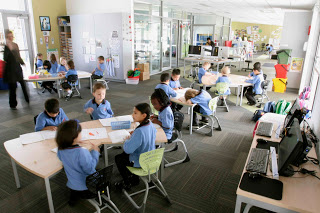


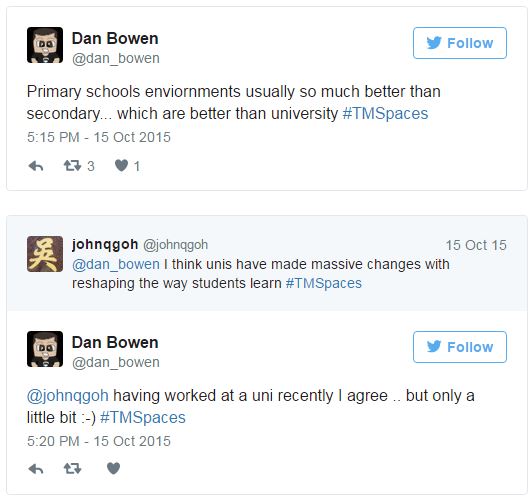
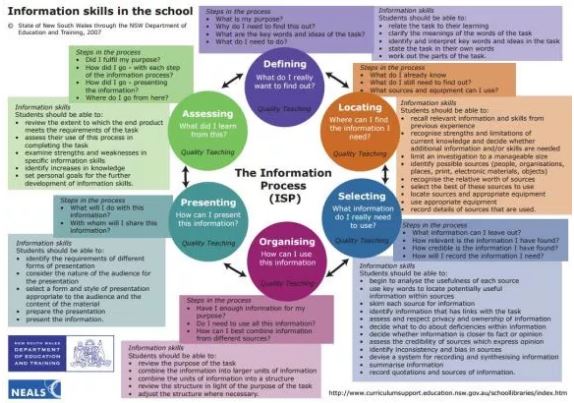
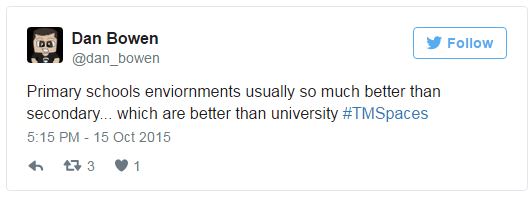
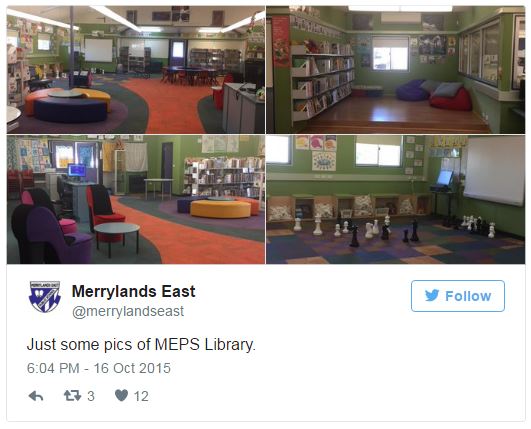
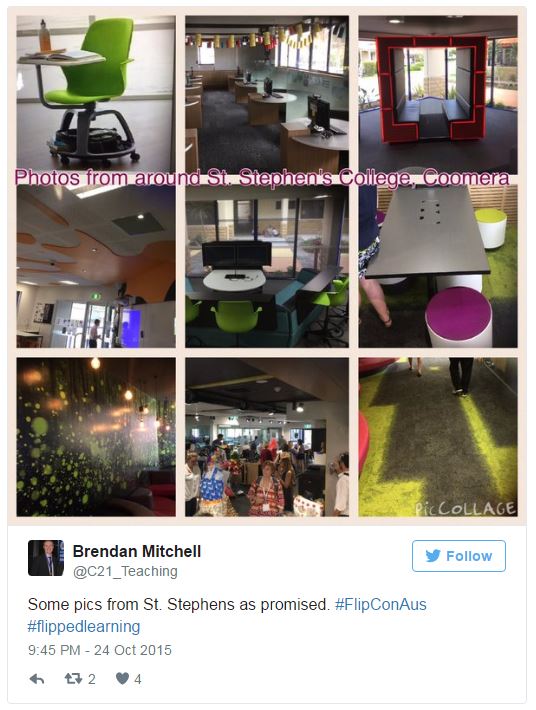
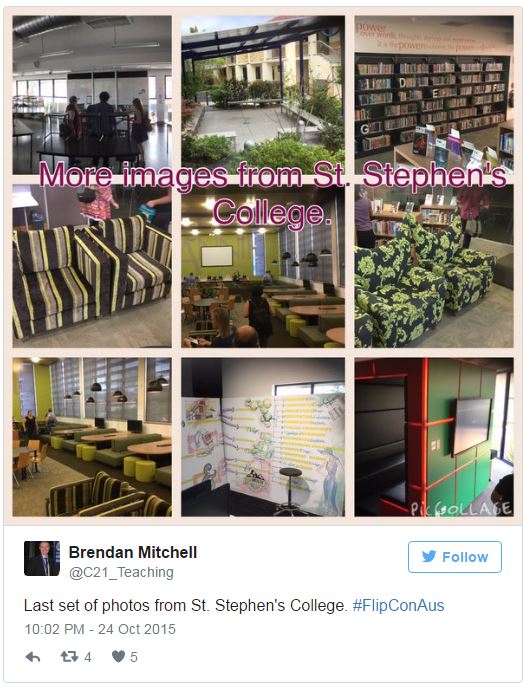
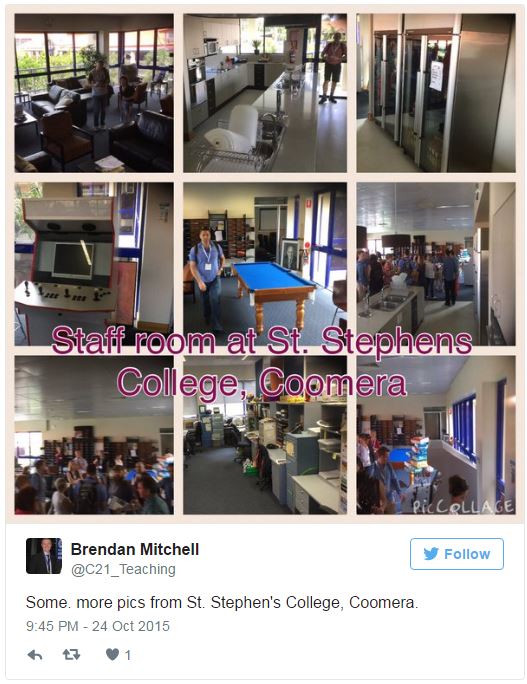

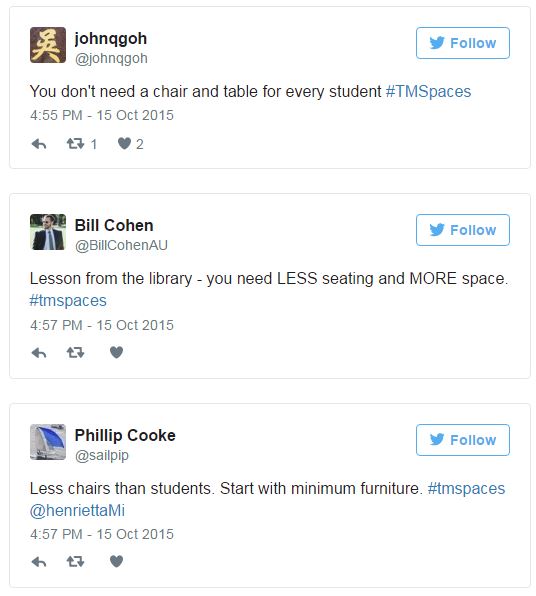

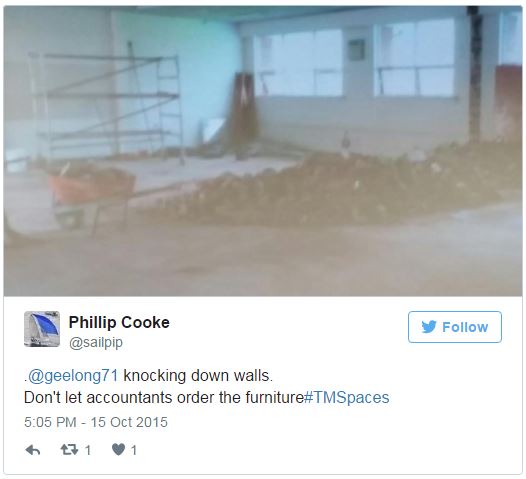
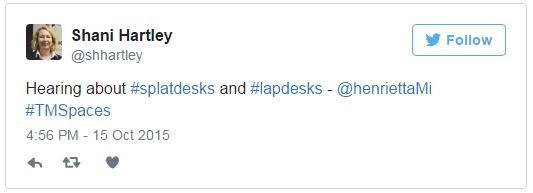
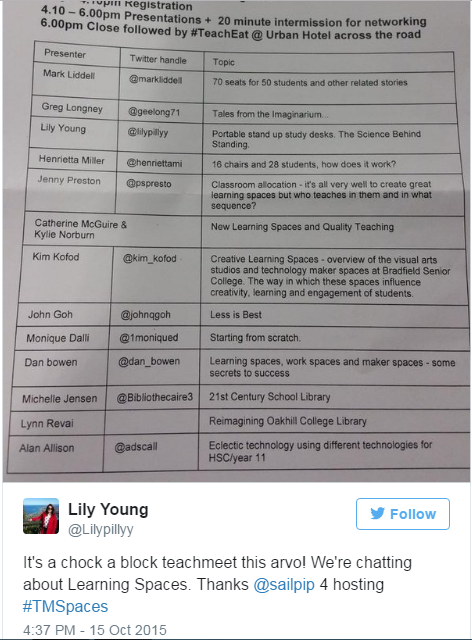
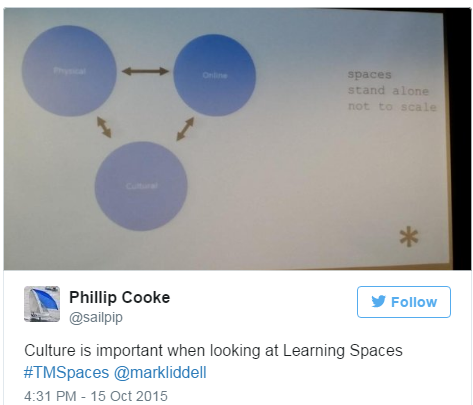
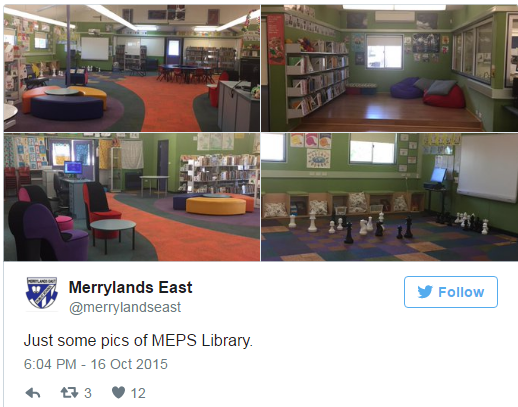
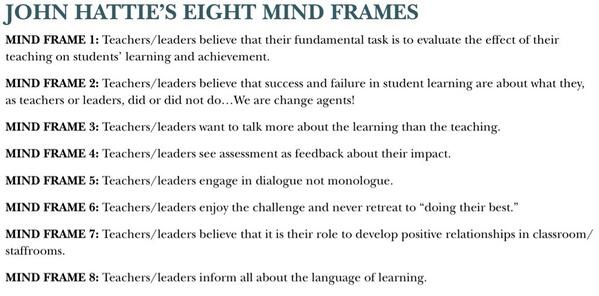
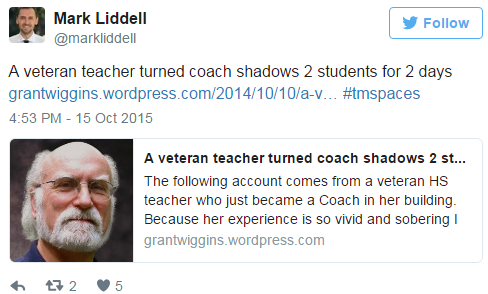
 RSS Feed
RSS Feed